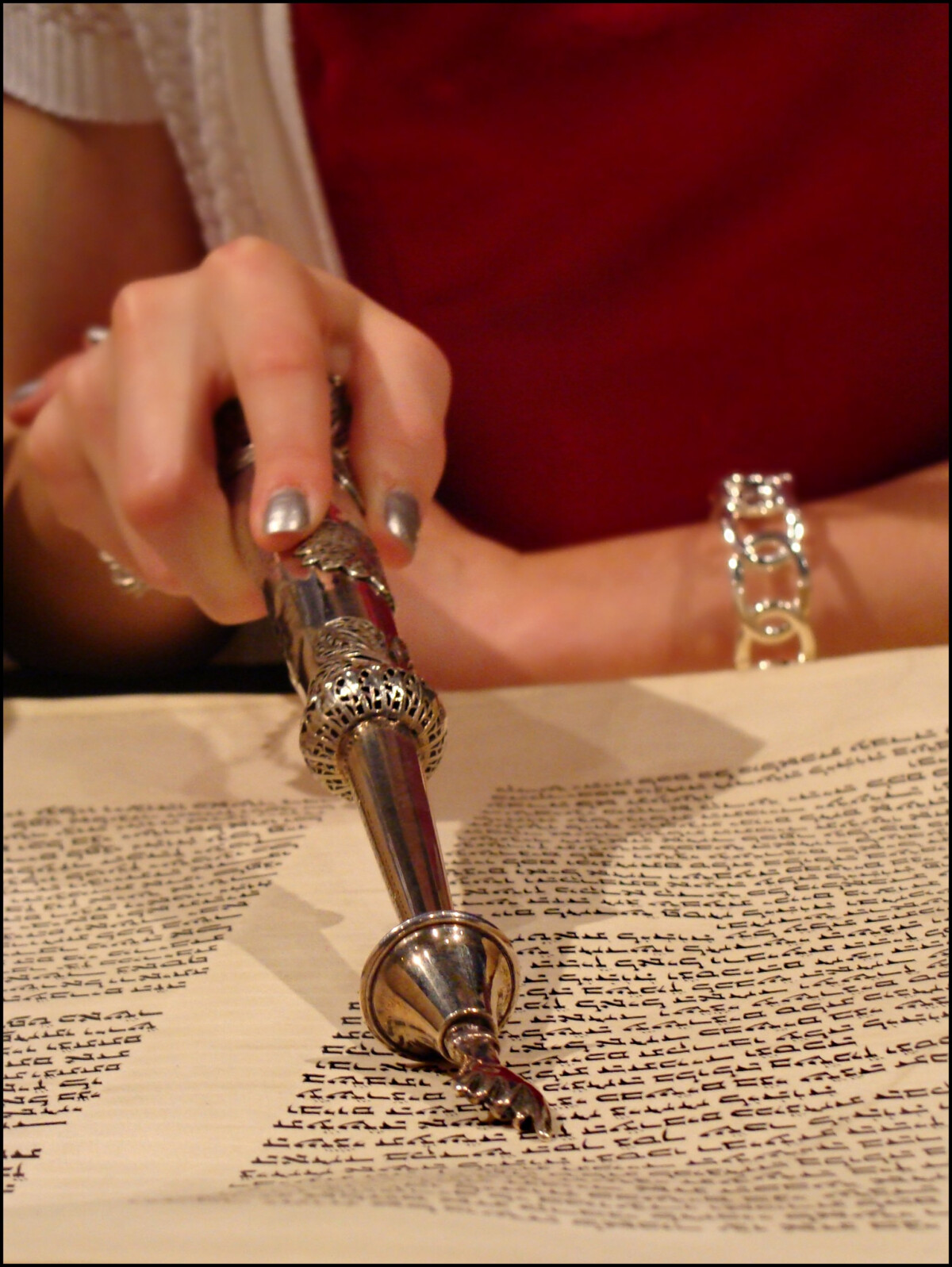

Picture taken Mid Bat Mitzvah ceremony.
By Drew Kramer
A Jewish child becomes a Jewish adult simply by reaching the age of 13. The B’nei Mitzvah ceremony marks the transition to Jewish adulthood, but is not a requirement to meet the milestone. While reading from the Torah and the subsequent celebration became the quintessential right of passage for the Jewish people, clergy in temples across the Jewish diaspora tailor the ritual and festivities to suit the enormous range of abilities across humankind.
Cantor Amanda Kleinman of Westchester Reform Temple (WRT) in Scarsdale, NY, shared the importance of being dynamic for all children in B’nei Mitzvah preparation, but particularly those with Autism Spectrum Disorder (ASD).
At Westchester Reform, Cantor Kleinman spearheads the temple’s task force on inclusion. Together with the temple’s staff specialist, the clergy will assess every child’s ability and create a ritual that allows the child to share meaningfully in the Jewish tradition. As the temple’s Senior Rabbi Jonathan Blake puts it, “the child is the arrow and we draw the bullseye around him or her.”
For parents of neurotypical and neurodivergent children alike, WRT’s task force suggests four guideposts to create a meaningful B’nei Mitzvah service that considers every child’s unique needs.
- Begin with trust: Often families hesitate to share a diagnosis, fearing that the child will be labeled. Cantor Kleinman understands that “families sometimes carry negative experiences in which sharing a diagnosis became a limiting factor, precluding a child from participation in a particular activity or dismissing the child’s ability to learn or accomplish a goal.” For families beginning their relationship with a religious institution, get to know the clergy and the community. Seek a synagogue with a demonstrated commitment to fostering inclusivity, trust and support.
- Make no assumptions: The Autism Spectrum encompasses an enormous range of ability. Kleinman emphasizes the importance of a “person first” approach. In her experience, every student possesses a unique personality, strengths, and challenges. She adds that in some cases, “students with documented ASD diagnoses exceed the “standard” amount of B’nei Mitzvah material, while neurotypical children might need significant adaptation or abbreviation of the material for other reasons. As a parent of a neurodivergent child, partner with clergy and educators to create the most meaningful, personalized experience for your family.
- Let the child lead: Let students own their own learning processes. In Kleinman’s experience, “students are often able to tell us how they learn best, what they need, what tools are most helpful to them, and what interests them.” For parents, let the experience be one that speaks to the child’s abilities, interests and passions. Every child will be more successful in a program designed to embrace his or her unique gifts.
- Be open and innovative: Throw out preconceived notions of what the ceremony and celebration should look like. A B’nei Mitzvah can be marked by learning a Jewish song or a simple Torah blessing. Embrace the magic and meaning that come from nontraditional expressions of the milestone.
With this openness, creativity and love, families can plan a ceremony for children at the most impaired end of the spectrum. Jamie Roitman recalls the service her family designed for her nonverbal older brother, Sam, over twenty years ago.
With the help of a touch talker, Sam chanted the Barechu, the call to prayer in a Jewish service. Other family members read the Torah portions, bringing their voices together to welcome Sam into Jewish adulthood. Following the ceremony, the family hosted an outdoor barbeque at home to celebrate with close relatives in the place he felt most comfortable. Reflecting on her family’s positive experience, Roitman advises families to eat, drink and be merry, but also to be wary of planning big, loud parties that can be overwhelming for people with the sensory sensitivities often present with ASD.
When it comes to the party, apply the same personalized approach recommended for the ceremony. This includes the following:
- Begin with trust: Trust that you know your child and his or her unique needs. Trust that your understanding of your child’s triggers and passions will allow you to create an event that makes your child feel special and connected to a community bigger than him or herself.
- Make no assumptions: No matter your vision of what a B’nei Mitzvah party should be, make no assumptions that this is what it must be. Release yourself from the burden of that expectation and focus on what is most important.
- Let the child lead: Let your child be your guide. Focus your time, money and energy on the people and things that bring love and light to your child’s life.
- Be open and innovative: Rewrite the script for your own story, but be prepared to forget your lines. No matter who our children are and how much we plan to set them up for success, we cannot always control the outcome. Surrender to the experience–and remember that any celebration rooted in love and tradition will create a meaningful spiritual life for children of all abilities.
Drew Kramer is a writer, performer, and founder of Lady and The Floofs.





